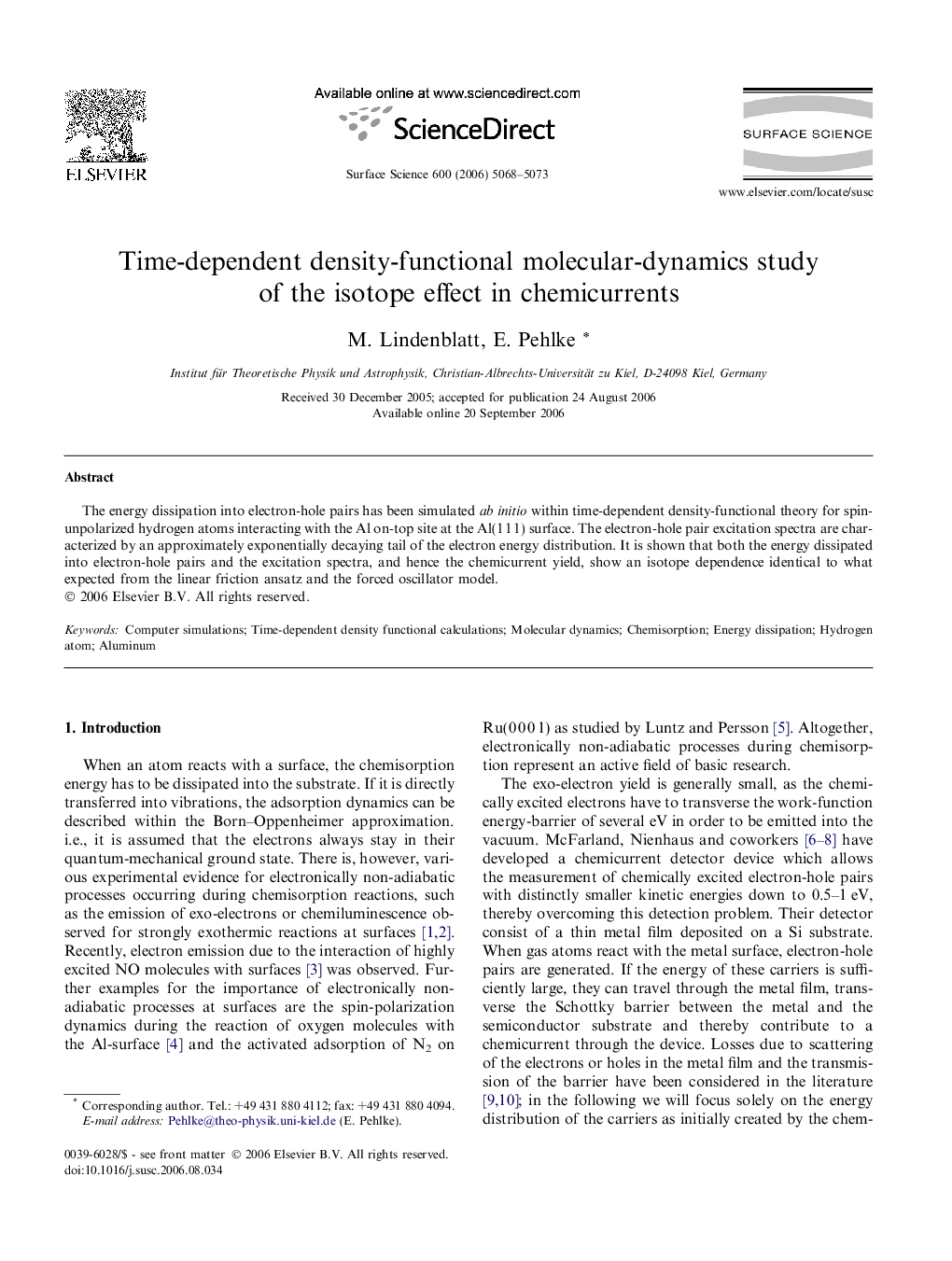| Article ID | Journal | Published Year | Pages | File Type |
|---|---|---|---|---|
| 5426711 | Surface Science | 2006 | 6 Pages |
Abstract
The energy dissipation into electron-hole pairs has been simulated ab initio within time-dependent density-functional theory for spin-unpolarized hydrogen atoms interacting with the Al on-top site at the Al(1Â 1Â 1) surface. The electron-hole pair excitation spectra are characterized by an approximately exponentially decaying tail of the electron energy distribution. It is shown that both the energy dissipated into electron-hole pairs and the excitation spectra, and hence the chemicurrent yield, show an isotope dependence identical to what expected from the linear friction ansatz and the forced oscillator model.
Keywords
Related Topics
Physical Sciences and Engineering
Chemistry
Physical and Theoretical Chemistry
Authors
M. Lindenblatt, E. Pehlke,
